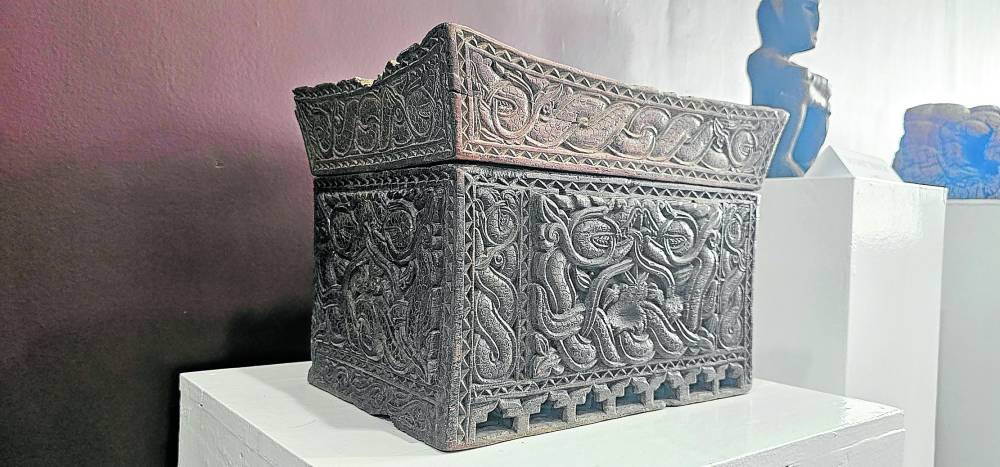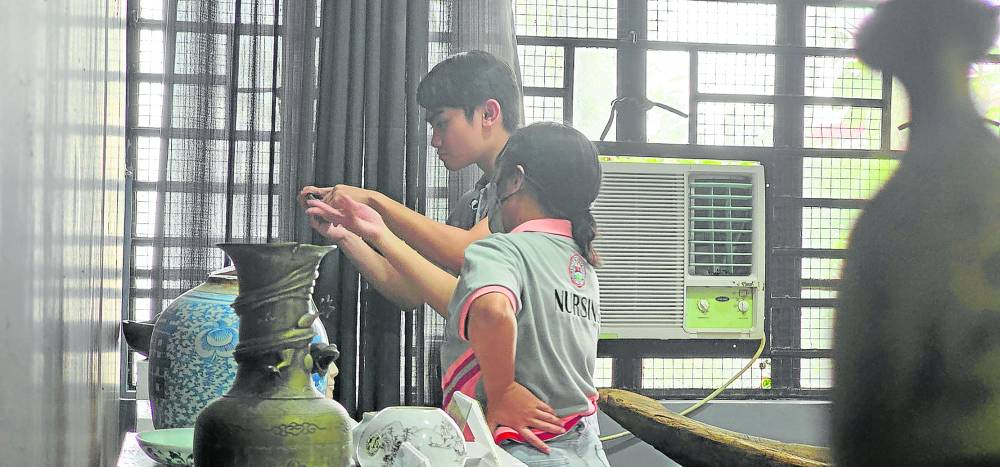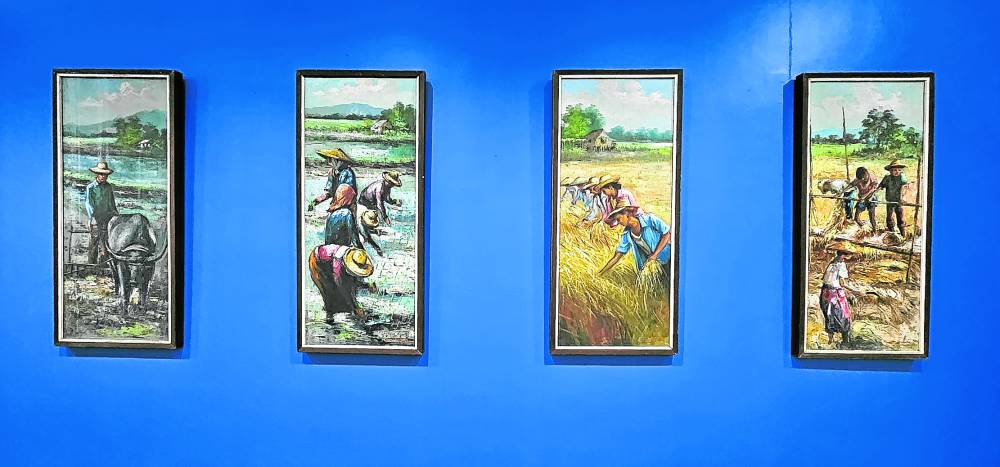New lease on life for Bicol’s oldest museum

WAY OF LIFE Jars, tools and cookware from pre-Spanish era Philippines are on display alongside chinaware, a garrote and paintings depicting farm life at the reopened University of Nueva Caceres (UNC) Museum in Naga City, Camarines Sur. PHOTOS BY REY ANTHONY OSTRIA
NAGA CITY, CAMARINES SUR, Philippines — From time to time, junior nursing student Danrie Josh Garcia, 20, would take snaps of the displays at the University of Nueva Caceres (UNC) Museum since it reopened in November 2023 after it shut its doors in 2020.
Garcia and a classmate joined a small group as Fr. Francis Tordilla blessed the museum early this year. He was also there to complete his project in his Philippine history class.
“What are new to me are the facts about how they [natives] lived before the arrival of the Spaniards because these weren’t emphasized (inside the classroom) before,” Garcia told the Inquirer in a recent interview.
READ: Heritage advocates fight to save Naga’s historic jail, post office
The UNC Museum first opened in October 1952, making it the oldest school-based museum in the Bicol region. In 2020, it stopped operation when the COVID-19 pandemic necessitated community lockdowns around the country.
Article continues after this advertisementThe museum holds volumes of law books from the late 19th century and old newspapers and clippings from early 20th century. But visitors can now see again the Middle Eastern antique brass teapots, dragon-decorated ancient wooden burial box, a brass Chinese vase from the 20th century (again, decorated with a dragon), chinaware from the 12th to 16th centuries, Indonesian brass lantaka cannon, cannon balls, wooden religious figures, a replica of a garrote (apparatus used to strangle someone) and a reproduction of an old Naga City map.
Article continues after this advertisementREAD: Museum for Naga City’s beloved son rises on playground
The museum is open on weekdays from 9 a.m. to 4 p.m., but Juan Paolo Suzara, part-time museum curator and placement officer of UNC, said that they could open to accommodate special schedules when they get messages via their social media accounts.

RESEARCH SUBJECT The UNC Museum is still verifying if this intricately carved item featuring a dragon is an ancient burial box.
Volunteers
“It was one of the service offices of the university that was once very active. It was part of the marketing and the extension learning of students not just of UNC, but of other universities as well,” Suzara, 43, said in an interview during the museum’s reopening in November.
But Suzara, who was only initially tasked to take photos of the museum for a tourism program of the city government back in 2022, admitted that he was disappointed with how the museum looked before it welcomed back visitors.
“When I got here, it was like a bodega (warehouse). It was a big frustration on my end,” Suzara said.
It was then that he decided to volunteer as its part-time curator despite not being an expert in managing a museum.
The museum has also attracted volunteers, all of whom were architecture students. The volunteers help Suzara amid all of the challenges the museum had to face for its reopening.
“Before I even went around to invite volunteers, they were the ones who came here,” Suzara said.

LEARNING TRIP Nursing students take photos of artifacts at the UNC Museum for a school project.
Marketing
Suzara said that one of the important things that they focused on was the marketing of the museum, which they did on social media and through face-to-face storytelling.
“That has a much larger impact to the visitors. On that part, they (the volunteers) helped me,” he told the Inquirer.
But the museum has a much larger challenge ahead.
“We need to evaluate the collection if it is feasible to be an extension of learning. We cannot offer half-cooked information if no studies have been made yet,” Suzara said, noting that he has invited historians and collectors to evaluate the museum’s collections.
Only 60 percent of what the UNC actually owns are on display.
“We still have collections that still need to be studied,” he said. “Quarterly, we will be changing the collections on display so that regular visitors have something different to see each time they visit.”
Collaboration
The museum is divided into four sections — precolonial era, the Spanish era, the American era and the history of the university. There are 200 to 250 collections comprising these sections, according to Suzara.
Danilo Madrid Gerona, a Bicolano historian who specializes on early Spanish colonization era, said that the UNC Museum’s access to artifacts that were mostly not available anymore was a great help to researchers and history buffs.
“One of the earliest museums established in the Bicol Region is UNC Museum. What this means is that at a certain point, they have petrified or they captured moments in history when the materials were still abundant for display. That is a big thing,” Gerona told the Inquirer.
The museum is now collaborating with Wikipedia Philippines, University of Bologna in Spain, the National Commission for Culture and the Arts and the Ayala Museum to improve its displays.
“We are very much thankful that through these engagements, UNC is becoming known,” Suzara said, adding that a handful of schools have already expressed the interest in visiting the museum.
The museum is also a member of the Naga City Museum Association, a group formed in March 2023.
